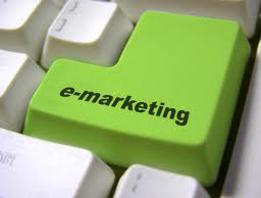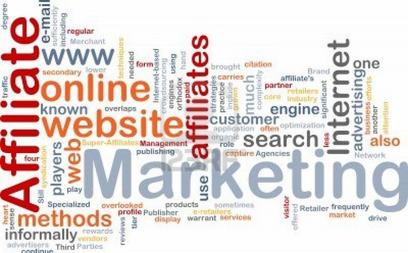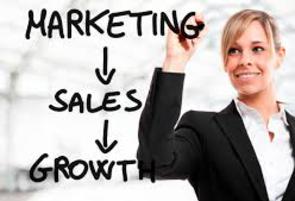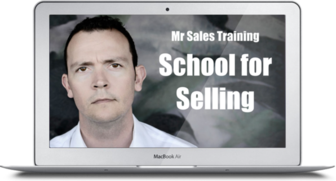www.MarketingAdvisoryCouncil.com
SEVEN GUARANTEED-TO-WORK
MARKETING STRATEGIES
1. Be reliable. This is one of the most important competitive advantages you have.
2. Say “Thank You” three times – once over the phone, once in writing, and once in person.
3. Maintain high standards of integrity and excellence. Even people who dont hire you will recommend you.
4. Be a problem solver. This is more important than having a good product or service.
5. Sell value and you'll make more money. Don't charge your customers for every breath you take on their behalf.
6. Don't be cheap. Prospects will respond more readily if you present a polished image.
7. Take a long-term view of your promotional activities. Patience will produce consistent results and steady growth.
One final thought: Spend less time pursuing dollars and more time pursuing relationships. Business success is about relationships, and relationships take time.
Article Marketing, Business Marketing, Direct Marketing,
Email Marketing, E-Marketing, General Marketing
Economic Development Council @ www.EconomicDevelopmentCouncil.com
MARKETING TIPS TO REMEMBER
Here are a few marketing tips to keep in mind when you're considering launching a new campaign.
Most businesses will get 80% of their sales from 20% of their customers. Know exactly who those 20% are and aim your advertising to that segment.
Research is a vital part of your marketing plan. Your effort should produce answers to who your prospects are, and where, why, when, and how they are converted into active buyers.
As your business grows, prepare a strategic marketing plan looking at how your product or service will meet the long-term needs of your customers.
Dramatically increase your odds for a direct mail response by including a self-addressed, stamped or postage paid envelope.
MARKETING TIPS TO REMEMBER - PART 2
To successfully market a product or service, you must first position your company in relation to the competition. Know how you want your company, product or service to be perceived by customers.
Image is important in the mind of the consumer. Decide whether you want to be known for low bargain prices, unlimited selection, top of the line customer service, or the highest quality of merchandise. Then position your business and marketing strategy accordingly.
Don't try to be everything to everybody, pinpoint your customer and target his or her needs. As your business grows, prepare a strategic marketing plan looking at how your product and service will meet the long-term needs of your customers.
Focus on specific marketing objectives, how to achieve them and a path of appropriate actions to take.
General Marketing...
ARTICLE MARKETING, BUSINESS MARKETING, DIRECT MARKETING,
EMAIL MARKETING, E-MARKETING & GENERAL MARKETING
15 EMAIL MARKETING TIPS
FOR SMALL BUSINESSES
Email marketing is a great way to reach your customers where they are without spending a lot of money. But it’s a big responsibility, too—people don’t give their email addresses to just anyone. Thinking about starting a company newsletter? Here are some tips to keep in mind.
Make it easy to subscribe. Post a signup form on your homepage, blog, Facebook page, and wherever else your customers and fans are already active. You might want to collect names and birthdays (for a special offer or gift) or invite readers to join groups, but don’t go crazy with the required fields. A too-long subscribe form might scare people off.
Tell subscribers what to expect. Whether you plan to send company updates, letters from the president, e-commerce sales, daily deals, or weekly tips, it’s important to tell your readers what to expect and how often to expect it. Give them as much information as possible on your signup form, so they can decide whether they want to be on the list or not.
Send a welcome email. It’s always smart to remind people why they’re on your list and reassure them that good things are in store. You might even send new subscribers a special offer or exclusive content, as your way of thanking them for their loyalty.
Design your newsletter to fit your brand. Your email campaigns should match your brand’s look and feel. If you’re using a template, you might want to customize it to include your company’s colors and logo in the header. If your emails are consistent with the rest of your company’s content, then readers will feel more familiar from the start.
Make it scannable. Your subscribers are busy people who get a lot of email, so it’s safe to assume you don’t have their undivided attention. Instead of one long block, break up your content into short paragraphs. Include subheadings and images to guide readers through your email and make it easier to scan, and add a teaser to the top of your newsletter to tell subscribers what’s in store. If you’re sending a long article, consider inserting a “read more” link so people can get to the rest when it’s convenient for them. Your subject line should be to-the-point and easy to digest, too. You might even want to a/b test subject lines to see which ones perform best.
Send people content they want. Email newsletter services offer features like groups and segmentation to help you make your content relevant to the people reading it. If you’re sending different emails for different groups (for example, a nonprofit might send separate emails to volunteers, donors, and the board of directors), then you can ask people to check a box to join a particular group on your signup form. Segmentation allows you to target certain subscribers on your list without assigning them to group. If your store is having a sale, then you could send a campaign only to people near a particular zip code, because subscribers who live in other parts of the world don’t need to know about it. You can also segment by activity, email clients, e-commerce data, and more. Sending relevant content will keep your readers engaged, and engaged readers look forward to your newsletter and share it with friends.
Keep a publishing calendar. A regular newsletter is a commitment. If you go several months without sending anything, then your subscribers will forget about you, and they’ll be more likely to delete the next email, or worse, mark it as spam. Make time to plan, write, design, and send your newsletters regularly.
Edit. Even editors need editors. When you’re working on your publishing calendar, leave plenty of time for the editing and revision process. Once you send a campaign, it goes straight to the inbox, and you can’t go back and update it. Newsletters contain meaningful content, and sloppy ones reflect poorly on the companies who send them. Grammar and style are just as important for email as they are for websites and blogs.
Test. Different email clients and mobile devices display emails differently. Send test emails to colleagues, or use a testing program to make sure your emails are going to look good on screens big and small. Testing reveals design mistakes before it’s too late, and testing programs can predict whether or not a campaign will get caught in a spam filter. You could even set up accounts with a few different email services for easy testing. Avoid sending one big image as a campaign, and cover your bases with a plain-text option for every email.
Think about mobile. If a campaign doesn’t show up on mobile devices, it’s not going to perform very well. Everything you send should be mobile-friendly. Check out ReturnPath’s “Email in Motion” infographic for some data that might affect the way you design your emails. One of the highlights: According to the study, 63 percent of Americans and 41 percent of Europeans would either close or delete an email that’s not optimized for mobile. Might be time to start using a responsive template.
Know your spam rules. A lot of innocent people send spam because they didn’t know any better. Read up on the CAN-SPAM act to avoid any trouble. Put simply, you’re allowed to send bulk email only to people who specifically asked to be on your mailing list. If you collected email addresses for a lunch giveaway or an event invitation, then you don’t have permission to send marketing emails unless you made that clear at signup. Include an obvious unsubscribe link in every email, and don’t forget to remind subscribers how they got on your list in the first place.
GOD BLESS AMERICA!
A Marketing MostWanted Website...
Internet Marketing Revitalization Education, Intelligence, Strategies & Solutions
Web: www.MarketingAdvisoryCouncil.com
JW Davis, Founder, President, CEO
Email: MarketingMostWanted@gmail.com
Office: 727.657.3339
Please Feel Free
To Contact Us Anytime!
Emergency Preparedness & Planning
Crisis & Emergency Management
Safety & Security - Issues - Strategies
Solutions - Resources


















